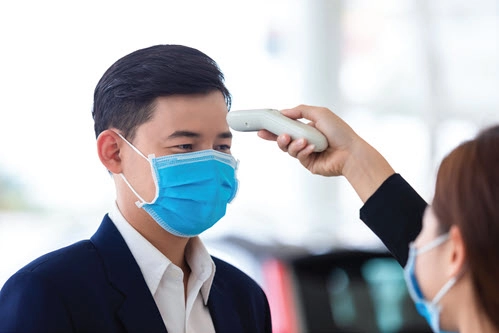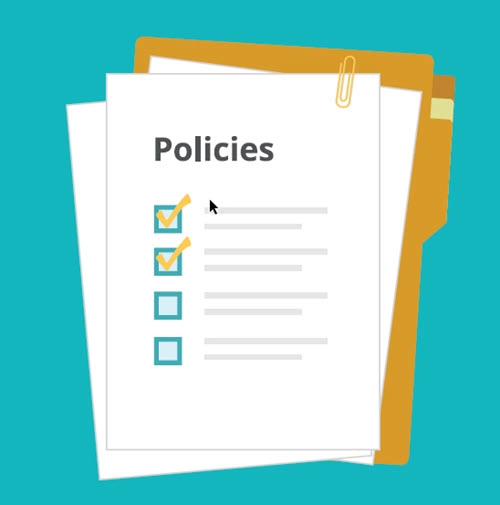Consider 3 Steps Before Resuming In-Person Encounters
Tip: Utilize IT resources to check in with patients. Despite current spikes in COVID-19 cases, reopening is still happening in many states. In fact, your organization may be keen to try and recoup business with a more intensive schedule and the opportunity to generate more revenue. Now: The Centers for Disease Control and Prevention (CDC) offers guidance for healthcare practitioners who want to utilize face-to-face encounters for nonemergent care. However, the danger of COVID-19, the infection caused by the SARS-CoV-2 virus, hasn’t diminished, and CDC guidance emphasizes that telehealth should be used whenever possible in situations where the potential for patient harm is low — even when community transmission is low. See CDC guidance for the various facility types at www.cdc.gov/coronavirus/2019-ncov/hcp/us-healthcare-facilities.html. 1. Coordinate With Local Authorities Even though reopening is being conducted on a regional and state basis, organizations should keep in touch with their local public health departments. Local officials will have the most accurate and active monitoring of COVID-19 infection and transmission in your area. The CDC recommendations are broken down by the potential for patient harm and the amount of active community transmission in your area. Important: Keep in mind that you may need to start providing services again on a gradual basis. Prioritize care for in-person encounters that, if delayed, might result in patient harm. The CDC provides examples of this kind of care as evaluation of symptoms that could indicate medical emergencies, such as stroke or heart attack or acute abdominal pain, as well as routine care for newborns or patients requiring certain cancer treatments. If your area has a higher incidence of COVID-19 transmission, transfer care to a less affected area if possible, the CDC recommends. Once community transmission is minimal to moderate, you can begin to resume in-person services that could cause patient harm if deferred but are less emergent, like pediatric vaccinations and certain surgical repairs and physical or occupational therapy. Though the feds encourage providers to use telehealth as often as they can, not all patients are tech-savvy or have the necessary devices for telehealth to be an option. Note, too that patients who cannot access or utilize telehealth should be prioritized for in-person care as well. The CDC deems routine visits, including those for management of controlled chronic conditions; elective surgeries; and screening for asymptomatic conditions as unlikely to cause patient harm if deferred, so you should wait to resume in-person encounters for these situations until the transmission of COVID-19 has stopped or is minimal. 2. Evaluate and Update Your Policies Before you open your doors, you should design a HIPAA-compliant plan for reopening. Some of the federal regulations enacted for the public health emergency (PHE) may affect how and when your staff work. Minimizing — and, ideally, halting — transmission should be the goal for all employers. Although healthcare providers are specifically excluded from these regulations, the U.S. Department of Labor (DOL) recommends flexibility in your policies to help reduce the spread. “To minimize the spread of the virus associated with COVID-19, the Department encourages employers to be judicious when using this definition to exempt health care providers from the provisions of the FFCRA [Families First Coronavirus Response Act]. For example, an employer may decide to exempt these employees from leave for caring for a family member, but choose to provide them paid sick leave in the case of their own COVID-19 illness,” the DOL says. Tip: Additionally, many states have separate labor regulations concerning COVID-19 and sick employees as well, which should be addressed when writing up your protocols. Plus: The American Medical Association (AMA) also offers comprehensive guidance specifically for physician practices. The AMA covers a variety of important reopening topics similar to the CDC like screening, testing coordination with hospitals, workforce safety, and telehealth options. However, the industry group also hits on the timely topics of liability and privacy, too. You may want to review state and federal guidelines on the intersection of liability and COVID-19 transmission while setting up your policies, AMA suggests. HIPAA: And even though the HHS Office for Civil Rights (OCR) has offered several notices of enforcement discretion related to HIPAA and telehealth, confidentiality, privacy, and data security are still required during a public health emergency (PHE), AMA reminds. Your reopening plan must take into account the HIPAA Rules, ensuring that staff understand they still apply during a pandemic. OSHA: Lastly, you may want to look at the Occupational Safety and Health Administration (OSHA) risk-level breakdown for healthcare workers as well as the agency’s sanitation advice. In its guidance, OSHA pinpoints low to high risk zones across the healthcare spectrum, which can be helpful in your planning. Environmental hazards, personal protective equipment (PPE), and cleaning regimes are also addressed in OSHA’s offering. 3. Implement Screening for Everyone It is vital that COVID-19 screening be at the top of your reopening checklist. After ensuring that the entrances to your organization are fortified, screen both patients and staff with questions and symptom checks. The CDC offers a questionnaire providers can adopt for intensive screening, which includes questions about whether patients or their household members have experienced certain symptoms in the past 21 days. Before: Staff responsible for scheduling should ask patients about any potential symptoms when confirming appointments, encouraging patients to reschedule nonurgent appointments and offering telehealth as an option whenever possible. You may want to do an additional check-in 24 hours before the visit if you must see the patient in person, the AMA recommends. In this call, staff should review the protocols for entering the practice, which may have changed, and confirm again that the patient is not experiencing COVID-19 symptoms. Appointment day: Screen the day of the appointment using a text messaging service if the patient consents, and the method is compliant with HIPAA, state, and other federal regulations. If you have enough staff, you may want to post a member outside the practice physically, either in the parking lot or foyer, to screen patients before they enter the office. Limit nonpatient individuals, but make sure you screen any individuals who must accompany the patient (like the parent or guardian of a child), with the same questions and symptom checks, the AMA advises. Bottom line: When you limit the number of people entering your practice and institute social distancing measures, you protect both your patients and your staff. You can reroute meetings with vendors, salespeople, or service providers, including for education, to videoconferencing technology. If someone must enter the practice to perform repairs or other necessary in-person services, schedule the visit for a time when the clinic is closed to minimize patient and staff exposure. Resources: Review DOL’s resource for the FFCRA at www.dol.gov/agencies/whd/pandemic/ffcra-questions. Check out OSHA guidance at www.osha.gov/SLTC/covid-19/healthcare-workers.html. See the AMA reopening advice at www.ama-assn.org/delivering-care/public-health/covid-19-physician-practice-guide-reopening. Disclaimer: Information related to COVID-19 is changing rapidly. This information was accurate at the time of writing. Be sure to stay tuned to future issues of Health Information Compliance Alert for more information.


